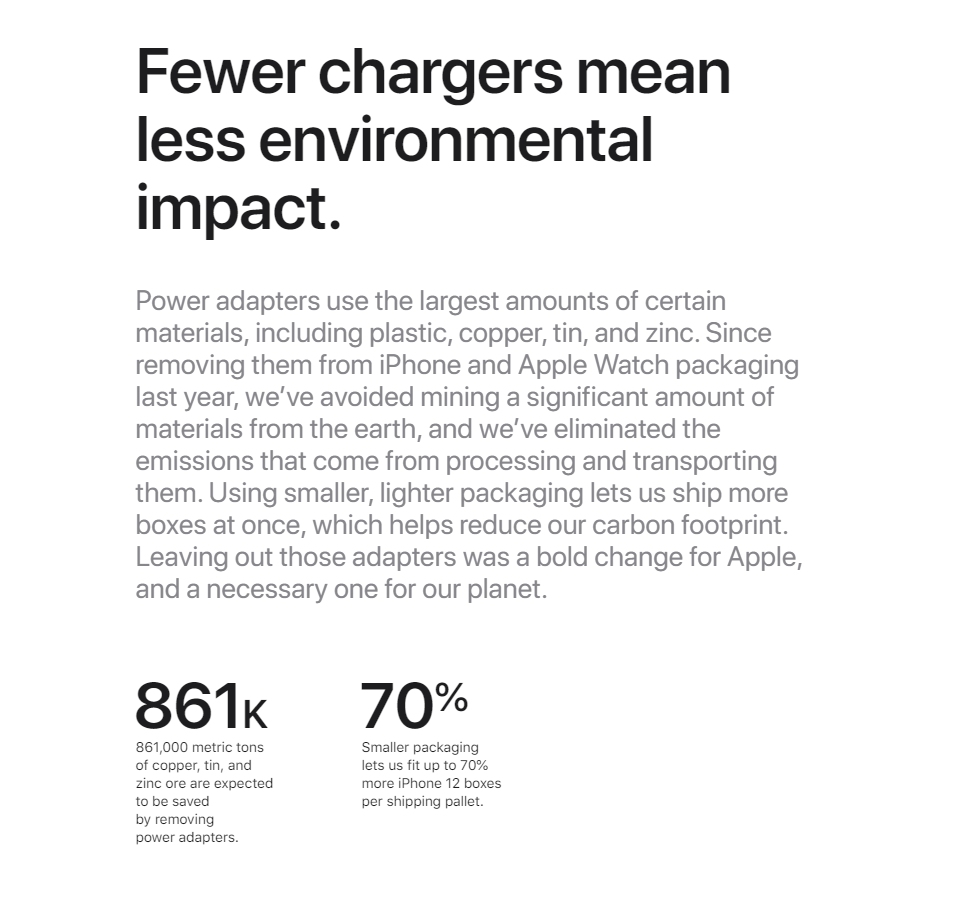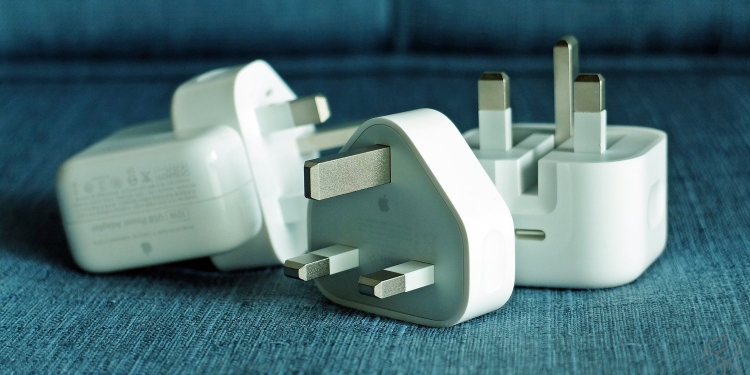When the iPhone 12 series was introduced, Apple made a bold move to exclude power adapters in the boxes of new iPhone units. According to the Cupertino company, the smaller packaging helps to reduce its carbon footprint and it can eliminate over 2 million metric tons of carbon emissions annually as they can fit 70% more iPhone 12 boxes per shipping pallet.
Based on Apple’s latest environmental report, not including a charger for its products has also helped save nearly a million metric tons of precious materials that are mined from the earth.

Apple says that power adapters use the largest amounts of certain materials such as plastic, copper, tin and zinc. After removing it from iPhone and Apple Watch packaging since 2020, Apple claims to have saved 861,000 metric tons of copper, tin, and zinc ore. Apart from mining, the move has also helped to cut down on emissions that come from processing and transporting the materials.

While the move to ditch the charger is controversial, we have seen other smartphone makers following the same step. Unlike Apple which removed the power adapter across the entire iPhone range that are still in production, it appears that Xiaomi and Samsung are taking a more selective approach.
Both Xiaomi and Samsung are still including power adapters for other smartphone models including its entry-level and mid-range segment. Even for Xiaomi, the option to buy the Mi 11 without a charger is only applicable in China as they have bundled the power adapter for international markets including Malaysia. It is also worth pointing out that Apple is still including a 20W USB-C Power adapter for its iPad.
Sustainability is still a huge focus for Apple as it aims to achieve carbon neutrality for its entire carbon footprint by 2030. It also aims to create products with net zero carbon impact in the same year. At the moment, they are currently carbon neutral for corporate operations since April 2020 and they are using 100% renewable energy source for all of Apple’s facilities.
You can read the latest Apple Environmental Progress Report 2021 here.








